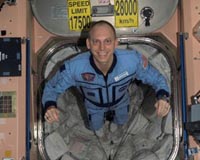 |
Vienna (AFP) July 14, 2009 They call them the "people in outer space". But besides stopping extra-terrestrial arms races, this tiny UN office has very down-to-earth goals: to help poor countries develop crops and help manage natural disasters. Overshadowed by its larger UN siblings -- like the World Health Organisation, the nuclear watchdog IAEA or the refugee agency UNHCR -- the Office for Outer Space Affairs (UNOOSA) and its 27 employees sits almost forgotten in the vast hallways of the United Nations headquarters in Vienna. "If we do make contact with aliens, who do you think should be representing mankind?" jokes UNOOSA director Mazlan Othman. "It would be the secretary general of the United Nations... that's why we're here," adds the cheerful Malaysian astrophysicist. The launch of the first satellite, Russia's Sputnik, in 1957 at the height of the Cold War prompted fears of an arms race in space. This led to the establishment of the Committee on the Peaceful Uses of Outer Space, made of member states, and a small unit that would later evolve into the Office for Outer Space Affairs. Five major treaties and agreements were drawn up in the following decades, regulating members' activities in space and advocating equal rights and access for all states. But despite its origins, the UN office is keen to emphasize the peaceful aspect of its work, setting up programmes to help poor countries gain access to space technology for developmental and aid purposes. "This is what we are most excited about at the UN because that is part of the development agenda of the United Nations," notes Othman. "It is sometimes such a simple way of helping a developing country just to tell them where their water resources are, and it never strikes that member state that they can use satellite data for instance." -- 'Envoys of mankind in outer space' -- ---------------------------------------- Communications, disaster mitigation, natural resource management, the study of climate change and tele-epidemiology -- the study of how diseases spread -- can all be facilitated by modern space technology and satellite imagery. And all states should have access to it, says Othman, which is why UNOOSA set up a Space Applications Programme to train and advise developing countries, and SPIDER (Space-based Information for Disaster Management and Emergency Response) to put them in contact with aid agencies, NGOs and satellite imagery providers. The Committee has 69 member states but about two-thirds of them do not have a space programme. "Just because you cannot have access to space because you don't have a rocket or... you cannot build a satellite, does not mean that you have no say in matters relating to space," explains Othman. But there is still a small element of science fiction involved in UNOOSA's work, for example in helping to coordinate responses to an asteroid potentially crashing into Earth. No single country currently has the capability to deflect or destroy a "near-earth object" large enough to do any damage, notes Jamshid Gaziyev, from UNOOSA's Committee Services and Research Section. So forward planning is essential, to have a strategy in place and avoid disputes between member states -- over whether to use nuclear weapons and where to divert the asteroid so that it makes the least damage when it hits earth, for example -- when a crisis situation finally arises, he says. The Outer Space Treaty of 1967 and the Moon Agreement of 1979 also forbid "the establishment of military bases, installations and fortifications... and the conduct of military manoeuvres on celestial bodies," while describing astronauts as "envoys of mankind in outer space." One day, the UN committee may even have to regulate space burials or space tourism, the office notes. So even if Hollywood has cornered the market on science fiction, the UN is not very far behind. "Space is more present in everyday life than we think," notes Gaziyev. Share This Article With Planet Earth
Related Links Space Tourism, Space Transport and Space Exploration News
 The Beating Heart, Minus Gravity
The Beating Heart, Minus GravityHuntsville AL (SPX) Jul 13, 2009 We've all seen video of astronauts drifting and gliding gracefully around inside the International Space Station like fish in a fishbowl. It looks so relaxing. But as enjoyable as it appears to be, there's a down side to all that freefalling. "When astronauts land back on Earth after a long time in space, not only is their vestibular system mixed up and their kinesthetic sense thrown off," ... read more |
|
| The content herein, unless otherwise known to be public domain, are Copyright 1995-2009 - SpaceDaily. AFP and UPI Wire Stories are copyright Agence France-Presse and United Press International. ESA Portal Reports are copyright European Space Agency. All NASA sourced material is public domain. Additional copyrights may apply in whole or part to other bona fide parties. Advertising does not imply endorsement,agreement or approval of any opinions, statements or information provided by SpaceDaily on any Web page published or hosted by SpaceDaily. Privacy Statement |